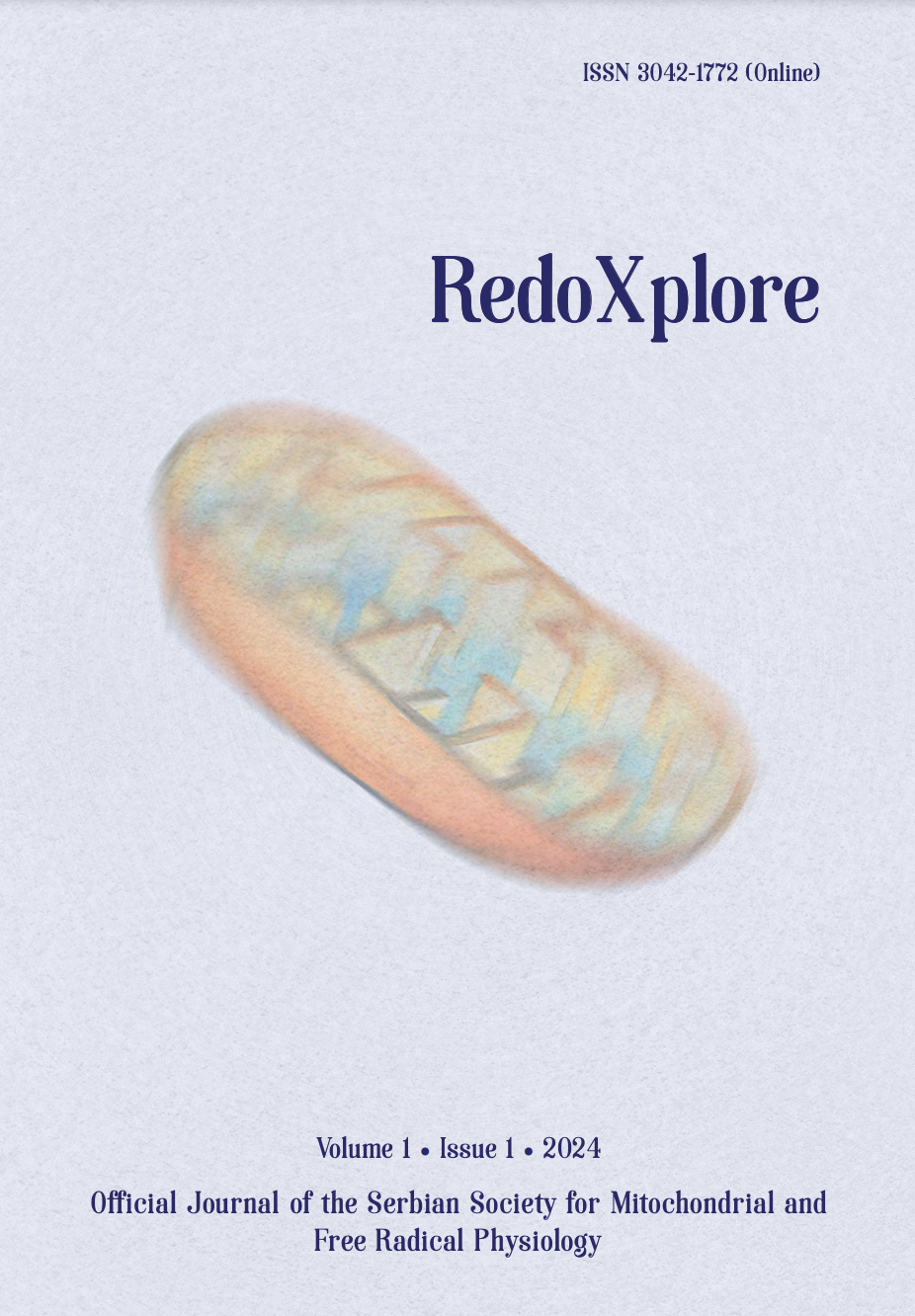
More articles from Volume 1, Issue 1, 2024
REDOX AND METABOLIC REPROGRAMMING OF BREAST CANCER CELLS AND ASSOCIATED ADIPOSE TISSUE - THE CORNERSTONES OF ADAPTIVE TUMOUR BEHAVIOUR
INSULIN MODULATES MITOCHONDRIAL STRUCTURAL AND FUNCTIONAL MOSAICISM IN BROWN ADIPOCYTES
NITRITE MITIGATES OXIDATIVE BURST IN ISCHEMIA/REPERFUSION IN BRAIN SLICES
NITRIC OXIDE, SUPEROXIDE AND PEROXYNITRITE – REDOX REGULATION OF THE CARDIOVASCULAR SYSTEM BY NITRO-OXIDATIVE STRESS AND S-NITROS(YL)ATION
DIETARY NITRATE AS PIVOT ON THE GUT MICROBIOTA-HOST REDOX COMMUNICATION
BODY SIZE, BODY SHAPE AND BREAST CANCER RISK – METABOLIC AND REDOX LINK
Department of Anatomy, Faculty of Medicine, University of Novi Sad , Novi Sad , Serbia
Department of Anatomy, Faculty of Medicine, University of Novi Sad , Novi Sad , Serbia
Department of Anatomy, Faculty of Medicine, University of Novi Sad , Novi Sad , Serbia
Oncology Institute of Vojvodina, Sremska Kamenica, Faculty of Medicine, University of Novi Sad , Novi Sad , Serbia
Institute for Biological Research "Siniša Stanković" - National Institute of Republic of Serbia, University of Belgrade , Belgrade , Serbia
Institute for Biological Research "Siniša Stanković" - National Institute of Republic of Serbia, University of Belgrade , Belgrade , Serbia
Faculty of Biology, University of Belgrade , Belgrade , Serbia
Institute for Biological Research "Siniša Stanković" - National Institute of Republic of Serbia, University of Belgrade , Belgrade , Serbia
Faculty of Biology, University of Belgrade , Belgrade , Serbia
Editor: Bato Korac
Published: 29.08.2024.
Selected oral presentations
Volume 1, Issue 1 (2024)
Abstract
Variations in body size and shape might be linked to different biological processes that affect breast cancer risk. Еpidemiological studies have confirmed that obesity, which is characterized by increased overall adiposity and assessed using body mass index (BMI), has direct relationship with the risk of breast cancer among postmenopausal women, and opposite relationship with the risk among premenopausal women (“obesity paradox”). In addition to BMI, anthropometric descriptors of body shape, like waist and hip circumference and waist-to-hip ratio are directly associated with both pre- and postmenopausal breast cancer risk. Excess adipose tissue, adipose tissue dysfunction, and adipose tissue-to-breast cancer crosstalk have important role in the initiation and progression of breast cancer due to the altered production of proinflammatory and proangiogenic mediators, growth factors, adipokines, and sex hormones, dysregulated insulin signaling pathway, as well as mitochondrial dysfunction and oxidative stress. Fat distribution pattern exerts an effect beyond the effect of overall obesity in relation to breast cancer development because of more adverse systemic metabolic effects related to visceral adiposity. Body height and its components have direct association with postmenopausal breast cancer risk. Increased risk of breast cancer in taller persons is probably due to increased levels of insulin-like growth factor (IGF-1), which is one of the major determinants of height, plays an important role in regulating breast stem cell number, and can affect cancer growth. Adult-attained height also reflects different aspects of maturation, including genetic, nutritional, and environmental factors. Assessment of changes in body height, mass, and distribution of adipose tissue throughout life is another important aspect of understanding the complex processes of metabolic reprogramming of energy pathways in breast cancer pathophysiology. Use of anthropometric descriptors of body size and shape can provide insight into underlying biological mechanisms, which is essential for developing targeted prevention and treatment strategies.
This research was supported by the Science Fund of the Republic of Serbia, #7750238, Exploring new avenues in breast cancer research: Redox and metabolic reprogramming of cancer and associated adipose tissue - REFRAME.
Citation
Copyright

This work is licensed under a Creative Commons Attribution-NonCommercial-ShareAlike 4.0 International License.
Article metrics
The statements, opinions and data contained in the journal are solely those of the individual authors and contributors and not of the publisher and the editor(s). We stay neutral with regard to jurisdictional claims in published maps and institutional affiliations.






